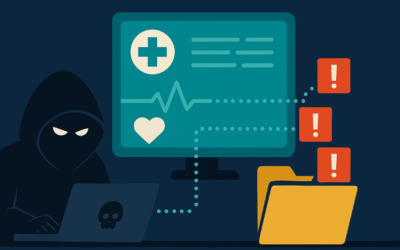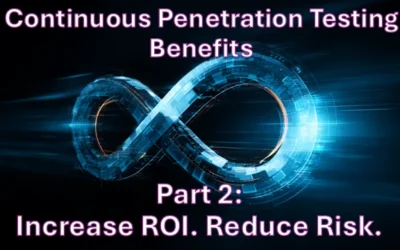As we welcome 2025, the cybersecurity landscape continues to evolve at an unprecedented pace. With the surge in sophisticated cyber threats and increasingly complex IT environments, the role of penetration testing (pentesting) has never been more critical. Organizations that prioritize robust cybersecurity, regularly validate their controls and never rely on vulnerability scanning alone to evaluate their systems and networks for weaknesses. Pentesting has become the gold standard for uncovering hidden vulnerabilities, identifying chained attacks, and validating security controls. Here’s why pentesting will be indispensable in 2025 and beyond.
1. Vulnerability Scanning Is Not Enough
While vulnerability scanning is an essential part of any cybersecurity program, it often provides a false sense of security. Modern scanners are excellent at identifying low-hanging fruit, such as outdated software or missing patches, but they fall short in detecting more advanced attack vectors. For instance, the 10+ privilege escalation attacks targeting Active Directory Certificate Services go undetected by most scanners, yet they pose significant risks to organizations.
Scanners also fail to identify how seemingly minor vulnerabilities can be chained together into a devastating attack. A knowledgeable attacker can exploit these chains to penetrate even the most fortified environments. For example, a weak password coupled with poor authentication controls could be the starting point for a chained attack that compromises sensitive systems. Pentesters excel in identifying these nuanced attack paths, ensuring your organization is aware of risks that automated tools alone cannot uncover.
10 Critical Vulnerabilities That Scanners Miss
-
- Weak MFA implementations
- Under-protected file shares
- Weak Kerberos, passwords & hashing
- Web app and API vulnerabilities
- Chained attacks
- Coercion to ADCS
- SCCM privilege escalations
- Legacy DNS to Domain Admin
- LLMNR & NBT-NS poisoning
- DACL abuse through ACE
2. Passwords and Users Remain the Weakest Link
Despite years of security training and awareness campaigns, weak passwords and user behavior continue to be the Achilles’ heel of cybersecurity. Administrators and users alike still create easy-to-guess passwords, leaving organizations vulnerable to attacks like password stuffing and password spraying. In fact, our pentesters often successfully guess passwords within the first few hours of a penetration test.
Pentesting not only highlights weak password practices, but also evaluates the effectiveness of multi-factor authentication (MFA). While many organizations have implemented MFA for systems like Microsoft 365 and remote access, it’s not uncommon to find methods that either lack MFA entirely or have insecure implementations. For example, a pentester could exploit a weak password to access a VPN and then use a “prompt bombing” attack to bypass MFA by overwhelming the user with approval requests until one is accepted. This type of chained attack demonstrates how weak passwords, insecure MFA configurations, and user behavior can be leveraged to breach systems.
3. Pentesting Validates Cybersecurity Controls
One of the most significant but under-discussed benefits of pentesting is its ability to validate your cybersecurity controls. Organizations invest heavily in security solutions, yet without systematic testing, it’s impossible to know if these controls are truly effective. Pentesting goes beyond identifying vulnerabilities; it tests the efficacy of your defenses under real-world attack scenarios.
At SynerComm, our Adversary Simulation (AdSim) services complement traditional pentesting by providing a collaborative approach to testing and improving controls. During AdSim sessions, our team simulates real-world attacks to demonstrate what real attacks look like as they hit your security controls. These sessions provide invaluable insights, uncover misconfigurations, and highlight gaps in coverage, enabling your team to strengthen defenses in real-time.
AdSim sessions, run in one-day increments, are a game changer. They give organizations the opportunity to see attacks unfold, validate their controls, and work alongside experienced pentesters to build resilience. In 2025, such proactive measures will be crucial as cyber threats continue to grow in sophistication.
The Future of Cybersecurity Requires Proactive Pentesting
As we move further into 2025, the stakes for cybersecurity have never been higher. Relying solely on vulnerability scanners or hoping that existing controls are sufficient is no longer viable. Pentesting provides a comprehensive view of your security posture, identifies critical vulnerabilities, and ensures that your defenses are battle-tested against real-world threats.
Now is the time to make pentesting a cornerstone of your cybersecurity strategy. By doing so, you’ll not only protect your organization from evolving threats, but also demonstrate a commitment to proactive, forward-thinking security practices. Don’t wait for an incident to test your defenses—empower your team with the insights and validation that only pentesting can provide.
Let’s make 2025 the year of stronger, smarter cybersecurity. Contact SynerComm today to schedule your next pentest and Adversary Simulation session and take the first step toward building an impenetrable defense.




